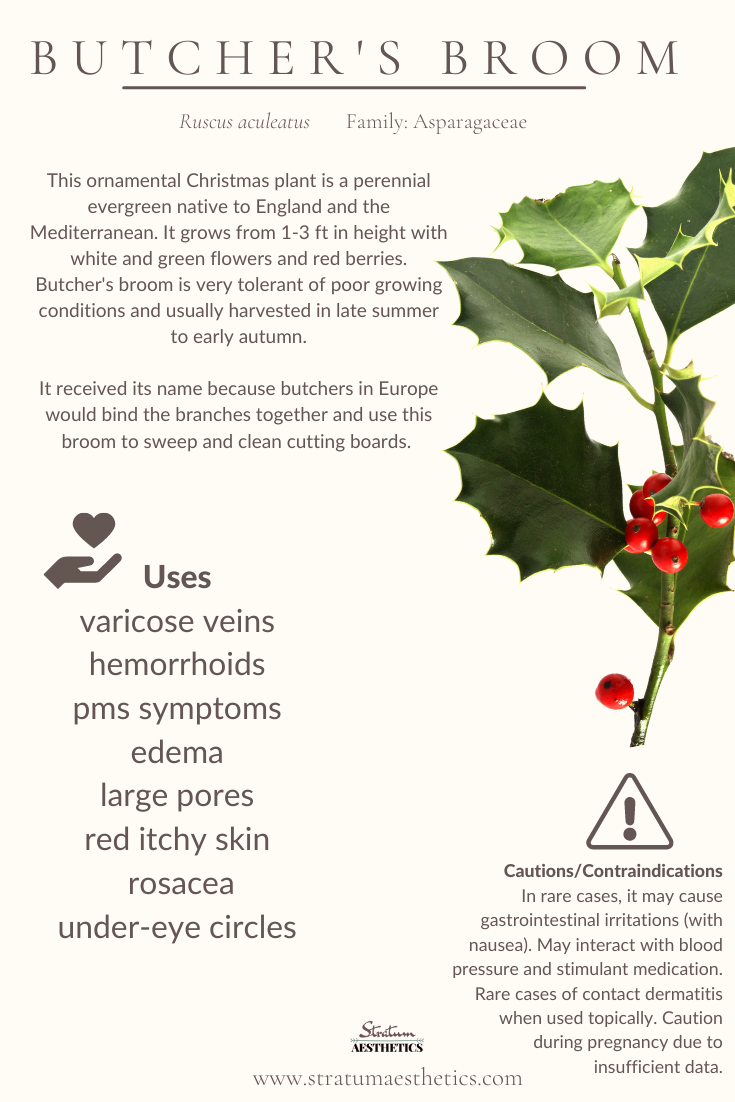
Common Name: Butcher’s Broom, box holly
Botanical Name: Ruscus aculeatus
Family: Asparagaceae
Appearance and Habitat: Evergreen shrub native to England and the Mediterranean, grows from 1-3 ft in height with white and green flowers and red berries.
Parts Used: Root (rhizome)
History: Received its common name because of the stiffness of the branches, butchers in Europe would bind them together and use this broom to sweep and clean cutting boards.
Key Constituents: Steroidal saponins (ruscin, ruscoside, etc., with aglycones ruscogenin and neo-ruscogenin), glycolic acid, sucrose, resin, etc.
Properties/Actions: Vasotonic (esp venotonic), anti exudative, astringent, anti-inflammatory, antipruritic, topical vasoconstrictor, diuretic, laxative.
Medicinal Use: Internally: Used for peripheral venous disorders (vericous veins in legs, hemorrhoids, etc.), reduction of PMS symptoms,treatment of edema, Topically: Reduces the appearance of large pore size, reduces itchy, red, and inflamed skin, beneficial for rosacea, reduces the appearance of dark under eye circles, beneficial for varicose veins
Preparation/dosage: Standardized extract capsules 7-11 mg, alcohol extract s 0.5-1.5 mL three times daily.
Cautions/Contraindications: In rare cases it may cause gastrointestinal irritations (with nausea). May interact with blood pressure and stimulant medication. Rare cases of contact dermatitis when used topically. Caution during pregnancy due to insufficient data.
Cultivation: Root collected/dug up in late summer or early autumn
Products Found In: Pure Sensitive Care Complex, Lift Intelligent Energy Cream, Refine Clay Renewal Treatment.
